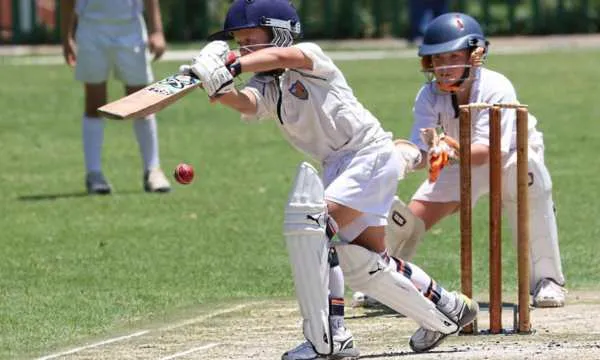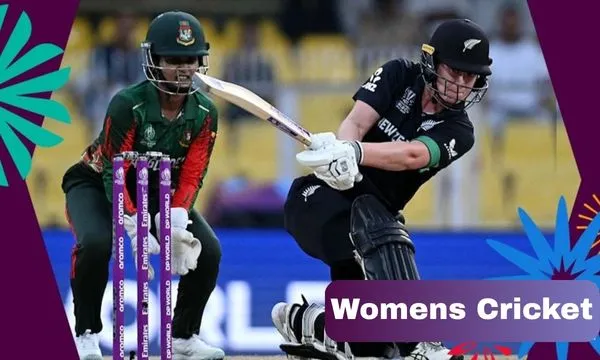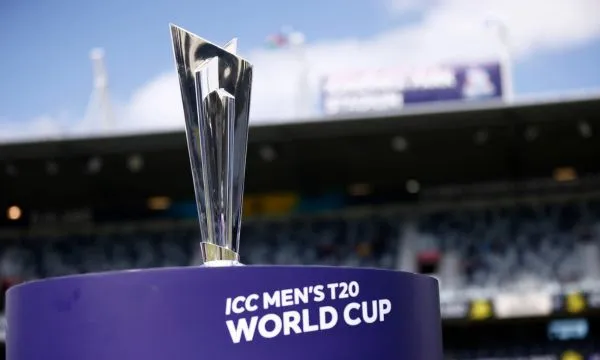Stepping onto the field with the right cricket kit does more than just prepare you for the match, it gives you the confidence to face any challenge.
Anúncios
The right gear in your cricket kit is your trusted partner, enhancing your performance, ensuring your safety, and allowing you to focus purely on the love of the game.
However, with so many options available, choosing the right items can feel a bit overwhelming. But don’t worry, we are here to help you.
How to Choose the Right Bat
Let’s start with the fundamental piece of equipment for any batsman: the cricket bat.
Think of it as your primary tool for scoring runs, so making the right choice for your cricket kit is incredibly important.
The first thing you’ll notice is that bats are primarily made from willow, specifically English Willow or Kashmir Willow.
English Willow is the premium choice, known for being lighter, softer, and offering better performance, which is why it’s favored by professional players.
Kashmir Willow, on the other hand, is a more affordable and durable option, making it fantastic for beginners or casual players.
Beyond the type of wood, the bat’s weight and “pickup” are crucial for your comfort and timing. A common misconception is that a heavier bat automatically means more power.
While there’s some truth to that, what’s more important is how the bat feels in your hands, which is known as the pickup.
A well balanced bat with a light pickup will feel easier to swing, allowing for quicker reaction times and better shot control.
It’s always a good idea to hold and swing a few different bats to find a weight and balance that feels natural and comfortable for you.
This personal feel is a key part of selecting the best bat for your cricket kit.
How to Select the Ideal Pads, Gloves, and Guards
Now that we’ve covered the bat, let’s talk about your armor. Protective gear is non negotiable in cricket, as it shields you from a hard ball traveling at high speeds.
Your batting pads are your first line of defense for your legs. Look for pads that offer a great balance between protection and mobility.
Traditional pads often use cane inserts for rigidity, while modern ones use high density foam, which is much lighter.
The key is to ensure they fit you correctly, they should cover your knee and shin comfortably without slipping or hindering your ability to run.
Next up are your batting gloves, which protect your hands and fingers, a very vulnerable area.
Good gloves should have ample padding, especially around the thumb and first two fingers, without feeling too bulky.
The palm material is also important, as it affects your grip on the bat. Most gloves use soft leather or synthetic materials for a better feel.
Also, consider ventilation, as your hands can get sweaty during a long innings. Ultimately, the best gloves are the ones that let you hold the bat with confidence and comfort.
Finally, don’t forget the other essential guards that complete your protective cricket kit. An abdominal guard (or “box”) is absolutely vital for all players.
Additionally, a thigh guard and sometimes a chest guard provide extra layers of protection against painful impacts.
These pieces complete your body armor, allowing you to stand at the crease with confidence.

What Is the ICC Standard Helmet?
When it comes to safety in cricket, nothing is more critical than protecting your head. A high quality helmet is not just a recommendation, it’s an absolute necessity in any cricket kit.
The International Cricket Council (ICC) has set stringent safety standards for helmets to ensure players are adequately protected.
An ICC compliant helmet must meet the British Standard BS7928:2013.
This standard specifies that the gap between the peak and the grille must be narrow enough to prevent a cricket ball from passing through.
Always look for the ICC compliance label when purchasing a helmet.
A compliant helmet has several key features. It starts with a rigid outer shell designed to withstand high impact forces, combined with a shock absorbing inner layer made of materials like high density foam.
The grille, which protects your face, should be made of a strong material like steel or titanium and be securely fixed to the helmet.
Furthermore, a secure and comfortable chin strap is essential to ensure the helmet stays in place during play.
A helmet that is loose or moves around on your head will not provide effective protection when you need it most.
Build Your Complete Cricket Kit for Batting
For a batsman, assembling your cricket kit is about combining personal preference with maximum protection. You are the one facing the bowler, so your gear needs to inspire confidence.
Your complete batting cricket kit should start with the essentials we’ve discussed: a well balanced bat that feels right, an ICC standard helmet, a pair of comfortable and protective batting pads, and a reliable pair of batting gloves.
To this, you must add an abdominal guard, a thigh guard, and potentially a chest guard and arm guard for comprehensive protection.
Once you have your gear, you need a way to carry it all. A durable and spacious cricket bag is a worthwhile investment for any cricket kit.
Look for a bag with separate compartments, especially a dedicated section for your bat and shoes, to keep your equipment organized and in good condition.
Bags come in various styles, from large wheelie bags to more compact duffle bags, so you can choose one that suits your needs and the amount of gear you have.
Last but not least, don’t overlook your footwear. A good pair of cricket spikes is essential for maintaining balance and grip at the crease.
They provide the traction needed for quick footwork and running between the wickets.
Build Your Complete Cricket Kit for Bowling
Transitioning from batting to bowling, you’ll find that the equipment needs change significantly.
While bowlers don’t require the heavy protective gear of a batsman, their cricket kit is just as important for performance and injury prevention.
The single most crucial piece of equipment for a bowler is their footwear.
Bowling boots or spikes are specially designed to provide excellent grip and ankle support during the high impact motion of a delivery stride.
They help you land securely and generate power, all while reducing the risk of slipping or twisting an ankle.
Beyond shoes, a bowler’s kit focuses more on comfort and apparel. Lightweight, breathable clothing that allows for a full range of motion is key.
Moisture wicking fabrics help keep you cool and dry during long spells of bowling under the sun.
Many bowlers also prefer to wear a sun hat or cap and sunglasses to protect them from the elements, ensuring they can stay focused on their target without distractions.
Build Your Complete Cricket Kit for Wicket-Keeping
The wicket-keeper has one of the most demanding jobs on the cricket field, and their cricket kit is highly specialized to match.
The most iconic piece of their kit is the wicket-keeping gloves.
These are much larger and more heavily padded than batting gloves, featuring a webbed area between the thumb and forefinger to help catch the ball securely.
They are designed to absorb the impact of countless deliveries, protecting the keeper’s hands from injury.
Next are the wicket-keeping pads. While they look similar to batting pads, they are noticeably different up close.
They are typically lighter and more flexible, with less bulk around the knee area.
This design allows the keeper to squat comfortably for long periods and move quickly and agilely to stop the ball.
Just like a batsman, a wicket-keeper must also wear an ICC standard helmet and an abdominal guard for protection when standing up to the stumps.
To complete the cricket kit, many keepers wear inner gloves under their main gloves for an extra layer of cushioning and to absorb sweat.
With their unique gloves, specialized pads, and essential protective gear, the wicket-keeper is fully equipped for their dynamic role.
Conclusion
Choosing the right cricket kit is a personal journey that balances comfort, protection, and performance.
From selecting a bat that feels like an extension of your arms to finding protective gear that gives you the confidence to play freely, every piece of your cricket kit plays a vital role.
We’ve walked through the essentials for batsmen, bowlers, and wicket-keepers, and we hope this guide has made the process clearer and more approachable.
Remember that investing in a quality cricket kit is an investment in your safety and your enjoyment of this wonderful sport.
FAQs
1. How often should I replace my cricket helmet?
Most manufacturers recommend replacing a helmet every 3 to 5 years, depending on use. However, you should replace it immediately if it suffers a significant impact, even if there’s no visible damage, as its protective integrity could be compromised.
2. Can I use batting pads for wicket-keeping?
It is not recommended. Wicket-keeping pads are specifically designed to be lighter and more flexible to allow for quick movements and comfortable squatting. Using bulky batting pads will restrict your agility and comfort behind the stumps.
3. What does “knocking in” a bat mean and is it important?
Knocking in is the process of compressing the fibers of a new cricket bat with a special mallet or an old ball to prepare it for use. It is extremely important as it reduces the risk of the bat cracking or breaking under pressure and improves its performance.
4. Are there different types of cricket spikes for different surfaces?
Yes. Full spike shoes are best for natural turf pitches as they provide excellent grip. Half-spike or rubber stud shoes are better suited for artificial or hard surfaces. Choosing the right footwear for the playing surface is crucial for performance and safety.


